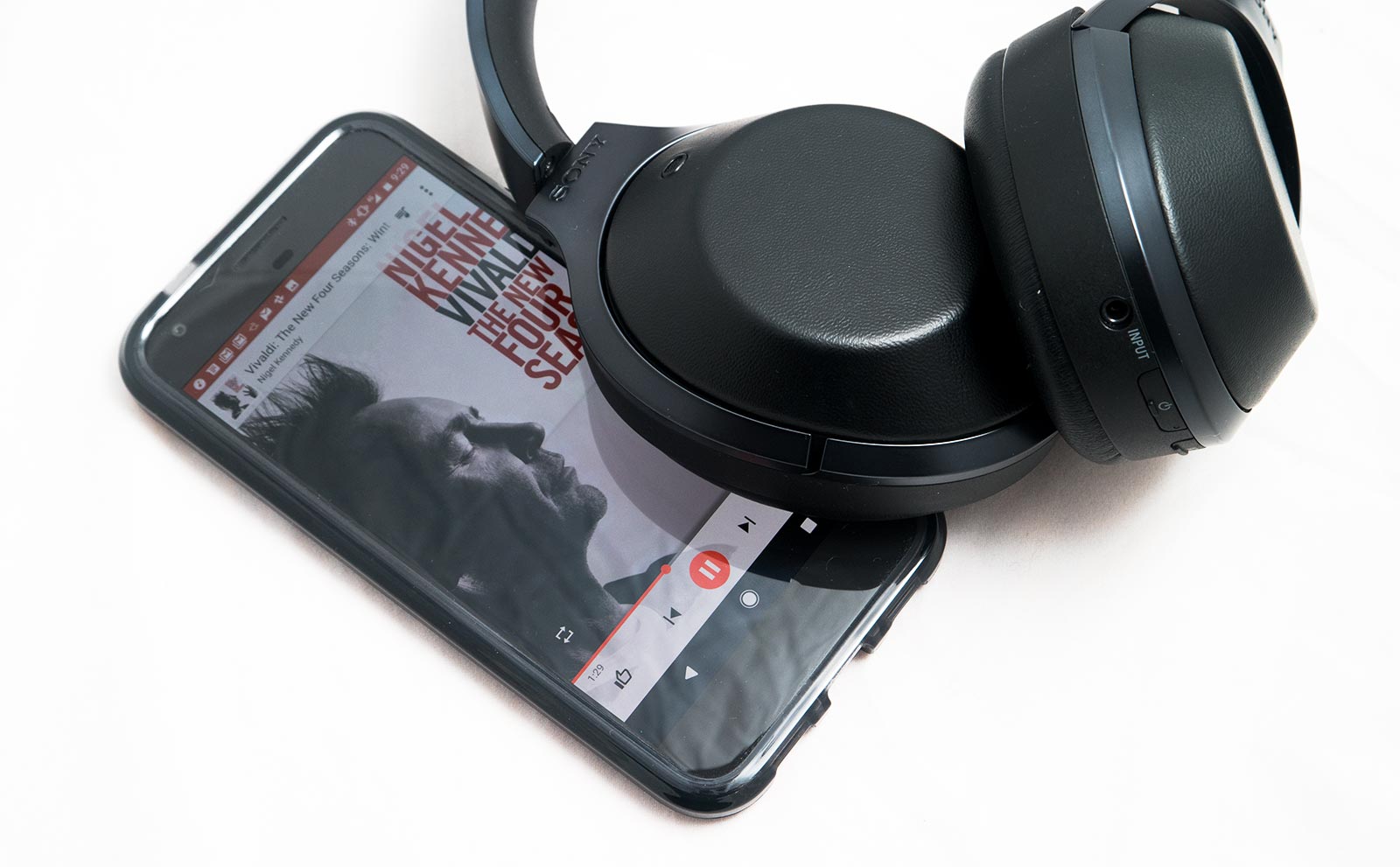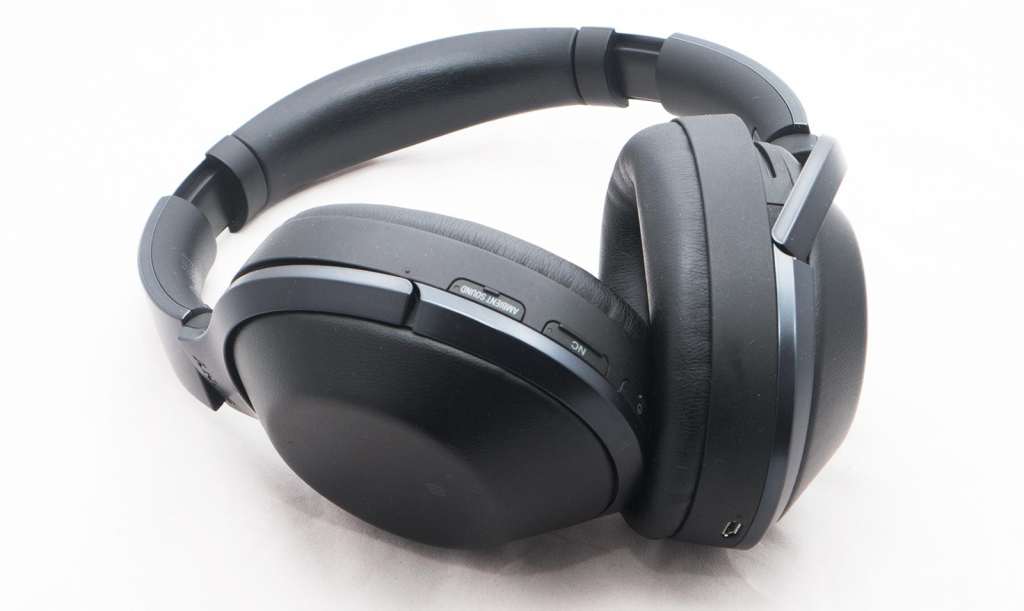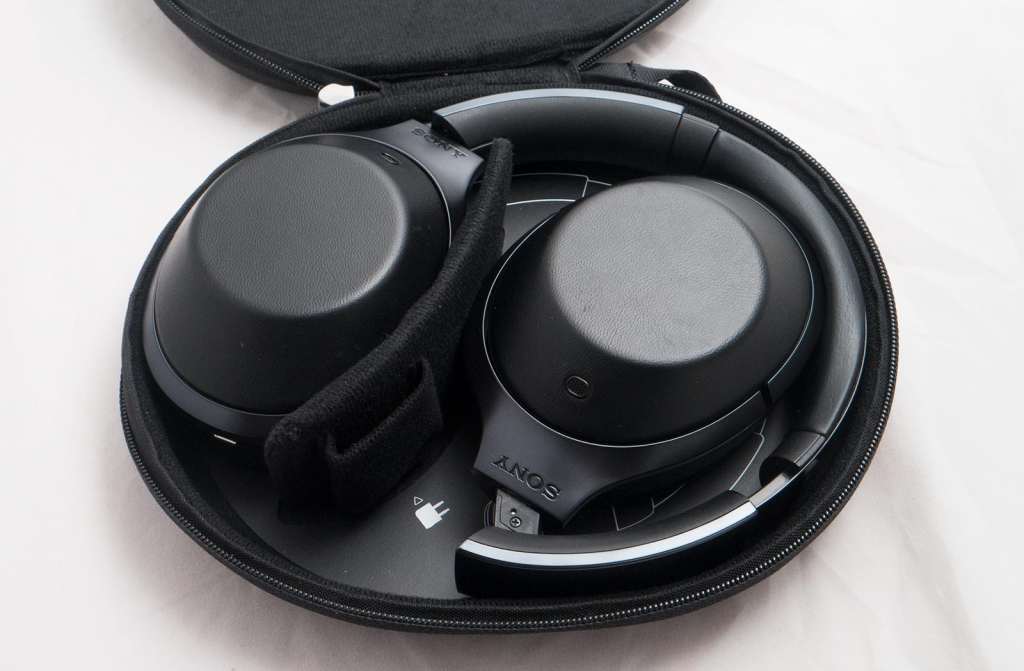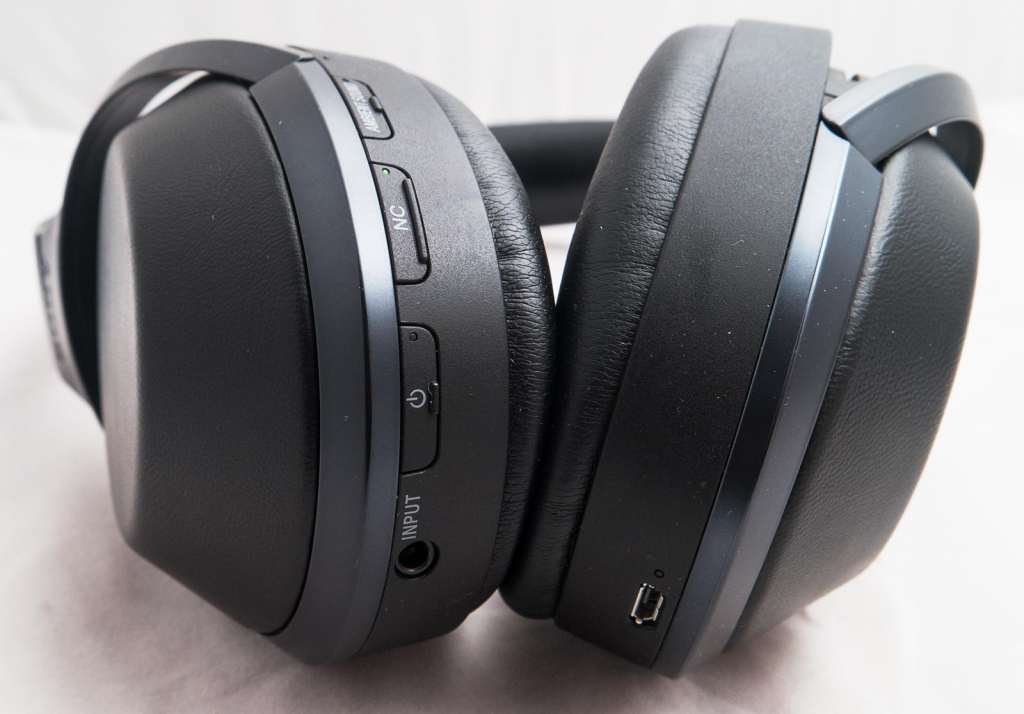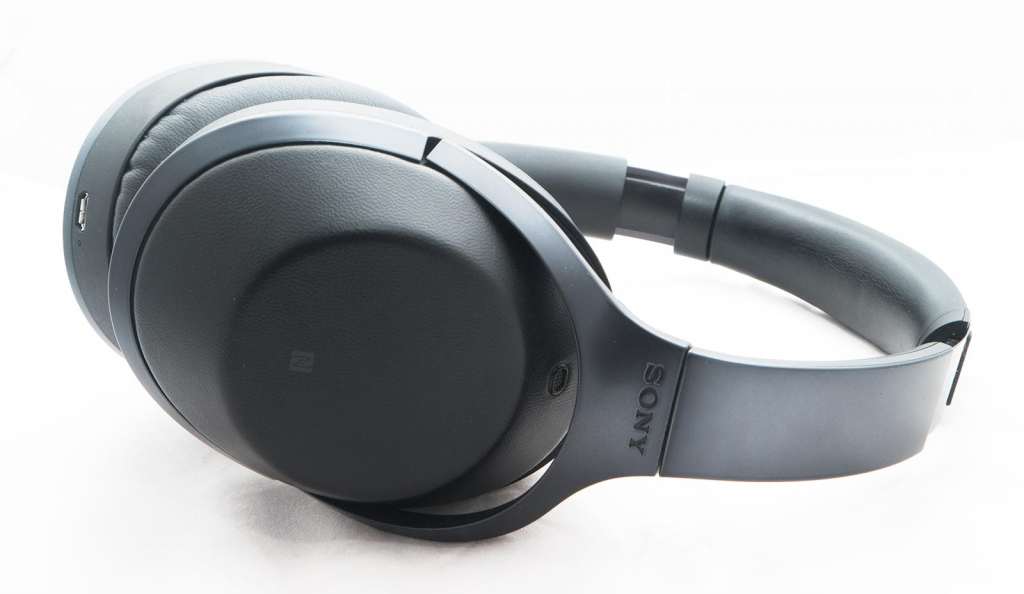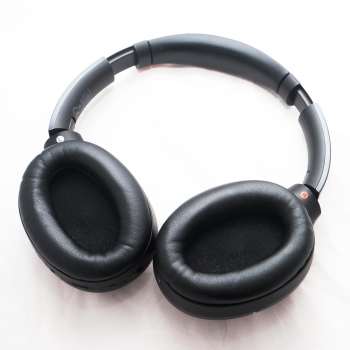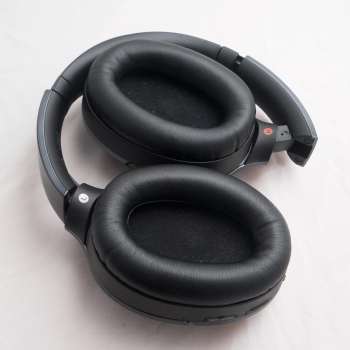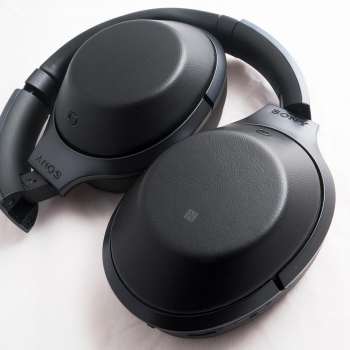Quick review
The good
The not-so-good
While not a terrible new thing, the big hit at the moment for headphones is that of noise cancellation, because why should the world bother you when you’re jamming to your favourite track?
Of course, there are plenty of reasons why the world should filter into your ears, and thus Sony’s MDR-1000X were conceived: a headphone that not only cancels out the world, but lets you hear it when you need to.
Design
Sony isn’t exactly new to headphone design, and with the latest headphones, has taken its previous a fairly relax approach to its design, grabbing its “h.ear on” headphones and changing the metal and plastic to something a little more luxurious: leather.
Or sort of leather, anyway, with a luxurious “leather-look” casing made of plastic leather over that of plastic and metal.
Outside of that leather-look material, it’s a pretty simple design, and you won’t find much in the design language that has evolved dramatically.
It’s modern, black, and semi-foldable, and it includes a 40mm driver with an aluminium-coated diaphragm inside and support for Bluetooth and a wired cable.
Sony also includes a protective case for the headphones, with a pouch on the back for the cable.
A proactive approach
More than just another pair of noise cancelling cans, Sony’s take on the category is a bit of a reinvention of the idea.
Normally, active noise cancellation headphones rely on one principle: cancel noise across one or a set of frequencies, and these are often the sorts of repeating hum-drum noise you can hear at the back of your mind on a flight.
You know the sort of sounds they’re going to kill, with the sound of planes, trains, and automobiles high on the agenda, though these days, the sound of the city is also part and parcel of what needs to be quelled, too, as noise cancellation becomes useful for those walking around.
This is the changing face of what noise cancellation technologies can be working with, no longer just working with hum and noise, but also other regular constant replaceable sounds, as the drone of humans congregating in a group all walking to work and talking mindlessly to themselves becomes a removable sound.
Generally, noise cancellation headphones try to adapt by sampling what’s there and reversing it, creating what is basically a vacuum for your ears. Not all headphones do the same job, however, with some only designed to work with various parts of the spectrum.
That’s seen active noise cancellation technology sit in pretty much the same space for the better part of a decade, with a made-for-purpose type of cancellation.
Sony’s MDR-1000X doesn’t just try to push out your standard active noise cancellation technology, however, switching to what some are calling adaptive noise cancellation, specifically with an engine that can adapt, which given that we’re doing so much more than boarding a flight or sitting in a coffee shop makes a lot of sense.
And that’s what we want: headphones that can adapt to the ambient background noise of everyday every-, well, of everything.
Just try not to walk out into traffic while wearing them.
In-use
Charging the headphones is easy enough, even if it does take its time, with everyone’s favourite microUSB charger seen on phones, speakers, and pretty much anything else for the past seven or eight years making its way here, and needing a good three to four hours of charge if you want to use the full extent of the 20 hour battery.
You don’t need to use the amplified mode if you want, and say you do run out of battery, there’s a perfectly good cable there to plug in if your phone still supports that port.
Still, we’d stick to the powered mode simply because it affords you use of the controls Sony has developed, with gesture controls on the right-side earphone: swipe up and the volume goes up, and swipe down and — you guessed it — it goes down. Swipe forward towards your feet and you skip a track forward, and backward to — yep — go back.
Sony’s gesture controls aren’t quite as fluid as those seen on other brands, but they’re don’t tend to flake out as much, so while you have to swipe up several times to raise the levels, you don’t have to drag your finger the right distance to find what you might consider “perfect”.
Performance
Testing with the Pickr and Listnr audio test, you’ll struggle to find complaints with the MDR-1000X, as the headphones don’t appear to have a weak point in any of the tracks or genres we tested it with.
The word we’ll associate best with these headphones is “clear”, with a tightness to the sounds regardless of what you play.
You know that feeling when the drums sound like drums because you can hear the vibration of the skin and the rumbling of the back of the vessel? That. That’s what we heard in Dave Brubeck’s “Take Five”.

How about the feeling that the human voice is an incredible instrument, and can recreate the feel of the synthetic, as people come together to layer their voice for multiple sounds that otherwise would need an effect, timing the entire time as someone clicks, snaps their fingers, recreating the sound of several instruments with their entire body? That. That’s what we heard in Pentatonix’s “Lean On”.
Our choice of music not withstanding from the Pickr audio test list, Sony’s MDR-1000X manages to completely handle any of the tracks we throw its way, each delivering a sense of clarity and amidst warmth in the lows that few headphones achieve, with a result that is really, truly, beautifully impressive.
Simply put, there’s a distinct balance across every song, with strength in the mids and bass, and nothing lost in the highs either, and we were able to pick up on the individual instruments in Ben Folds’ “Yes Man” overlapping with Ben’s voice, or the multiple layers of synth and presence Ellie Goulding’s “Army” is supposed to swarm with.
Classical and jazz presents itself beautifully, too, providing a sound that allows every instrument to ring true, the bottom end peeking out under it all, and communicating the drop of bass that is present in nearly every sound.
Sufficed to say, we weren’t disappointed in any of the tracks we heard, be it from Nigel Kennedy, Norah Jones, Miles Davis, or Dave Brubeck. It’s hard to be disappointed when you’re greeted with what is close to wireless perfection, and a sound that keeps you in the zone and doesn’t offer a reason to get you out.
This is apparently the power of Sony’s “Sense” engine, the technology working at the heart of the headphones, which is there to process the audio, resulting in what Sony describes as a technology that “provided an individualised experience for every single sound, including music and ambient sound, tailored to each user’s preferences”. This works in tandem with technology found in Sony’s high-resolution Walkmans, the S-Master HX amplifier and DSEE HX upscaling engine.
In actuality, the result isn’t a sound that’s as much “tailored” as it is “rendered”, and beautifully so, because once you plug in audio really of any dimensionality, you’re provided a level of pristine clarity that is hard to look past.
There’s no denying it: these are seriously impressive headphones.
Even the volume is easy to get used to, with enough volume for our ears at around 50 percent, suggesting that if your ears aren’t in as good a condition, you’ll still have plenty to work with, and won’t be complaining that the headphones need more sound at all.
With the audio performance solid, all that needs to be looked at is the noise cancellation as a measurement, and luckily, we were able to test against our regular favorite, the Bose QuietComfort 35 headphones.
Up until now, these had were the benchmark, edging out the otherwise excellent Bose QuietComfort 30 in-earphones, the Audio Technical ANC9 headphones, and the Bose QuietComfort 25 headphones the 35s replaced this year.
But after thorough testing, Sony’s MDR-1000X could just dethrone Bose’s new king, though it is very, very close.
Tested at IFA in a special noise testing room, the differences were subtle, especially with simulated aircraft noise.
In a real world test, though, those subtle differences are still subtle, and it’s less about a better noise cancellation, but rather a clearer cancellation.
For instance, both headphones do a stellar job, but while the QuietComfort 35 headphones from Bose quell the noise and reduce it to a faint whisper of wind at the top end, the Sony MDR-1000X headphones cut it back to sounding more like a hint of a breeze in the mid-range.
It might just be our ears, but we’re more tuned to picking up on sounds when they’re higher pitched, which technically means we’re hearing the noise not being cancelled as well more in the Bose than in Sony’s effort, which to our ears gives Sony the edge.
Sony also has its auto-optimiser technology reliant on that “Sense” engine we spoke of earlier, which improves on the cancellation by analysing sounds in and out of the headphone, improving the effect when used in environments.
Holding down the noise cancellation button for a second will switch this on, and after a few seconds of test audio, that hint of a breeze became even less discernible, a solid result considering what we were hearing without optimisation.
Or to put in another way and make a long story short: the cancellation capabilities of the Sony MDR-1000X aren’t just leading, but cutting edge.
Adaptive and well-engineered, these headphones are the future of noise cancellation.
Letting the sound in
Of course, cancelling noise is just the beginning of what these headphones can do, because you don’t always want to cut out the world. Sometimes, you need to hear precisely what’s going on, even if you want to keep listening to your music.
To that end, the cancellation technologies can be tipped on their head, switching the microphones on and letting in ambient noise while still filtering in the music.
This makes up Sony’s two “ambient” modes, which were basically made in case you have to listen to the world while you’re at an airport and waiting for an announcement, or were waiting for someone to talk to you, delivering an audio experience that is very reminiscent of bone conduction headphones, whereby you can hear the outside world, but you also hear everything else streamed to your ears.
Two modes make up this mode, with “normal” and “voice”, essentially equating to mids and highs or just highs, and for the most part, when we used these modes, we found ourselves sticking to voice simply because normal let in far too much sound.
That said, the inclusion of this as a feature is very cool, not least because in a situation where you’re looking out for a call out or announcement, it is super handy. No more missed flights again, and when you’re ready to go back to noise cancellation, you merely need to press the middle “noise cancellation” button and the MDR-1000X will switch the microphones back to capturing the outside world and cancelling out the sound.
There is also support for a sort of emergency cut-off switch for the sound, a neat little feature that has you hold your palm to the right ear-pad to bypass the music altogether and let you filter in the real world.
You’ll know the time you need this, too, such as when coworkers are trying to get your attention, and you know you won’t be long, so you hold your hand down on the ear-pad, listen to what they have to say, and get right back to the music you were enjoying.
What needs work
Make no mistake, we’ve been impressed with the MDR-1000X throughout our time with the headphones, as they not only offer some of the best noise cancellation technologies, the audio is solid too.
Without a doubt, Sony’s MDR-1000X are outstanding headphones, and easily worth your ears.
Your mouth, however, that’s a different story, with the microphone not really proving itself a solid performance unless you happen to be close to the phone and in a room with no one else.
If you don’t have this issue — and you may not, as Bluetooth issues can be rather specific, an area we’re looking more into — the other area worth noting is that of what we think should be in these headphones, and should be in all premium headphones, but isn’t here at all.
Specifically, that’s a neck sensor, with the headphones not pausing like you might find with those from Parrot or even Plantronics. If that’s a gimmick to you, no worries because you may not need it, but it’s the sort of thing we’d like to see an option for.
Final thoughts (TLDR)
There’s no doubting that 2016 has been an interesting year for headphones, and thanks to Apple’s endorsement of the removal of the headphone jack, more and more people are going to be encouraged to switch to wireless headphones. For the past however-long years that Bluetooth stereo headphones have been something you could buy, there’s never been a greater motivator to switch from wired to wireless, because if your phone doesn’t come with the staple headphone jack we all use, there’s your main reason right there.
Apple isn’t the first to do this, mind you, with Oppo and Lenovo beating the iPhone-maker to the punch previously. But few have the market penetration of Apple, and that makes wireless a big deal, possibly a bigger deal this year than it ever has been.
Wireless is already important and is there on pretty much every phone, so it’s not as if Apple is championing it more than anyone else, it’s just harder to ignore when the 3.5mm jack is removed.
So wireless is the thing that people want, and if they’re going to go down that path, why not go with the best headphones you can find?
Sony’s MDR-1000X may well be those headphones, delivering what is quite possibly some of the best sound recreations this reviewer has ever heard in a headphone that sits under the $1000 price range, and doing it without needing wires attached.
It didn’t matter what we threw at these headphones: rock, pop, jazz, classical, electronic, house, metal, hard rock, hip-hop, drum bass– hell, spoken word sounded solid good in these cans. They just can’t be tripped up.
We really need to say this because few headphones impress us to the point where we’d happily suggest them to others, and if you can get around the muddling microphone management, the audio performance is so good, it’s hard not to find yourself absorbed by the music rendered by Sony’s $699 MDR-1000X headphones.
Highly recommended.


